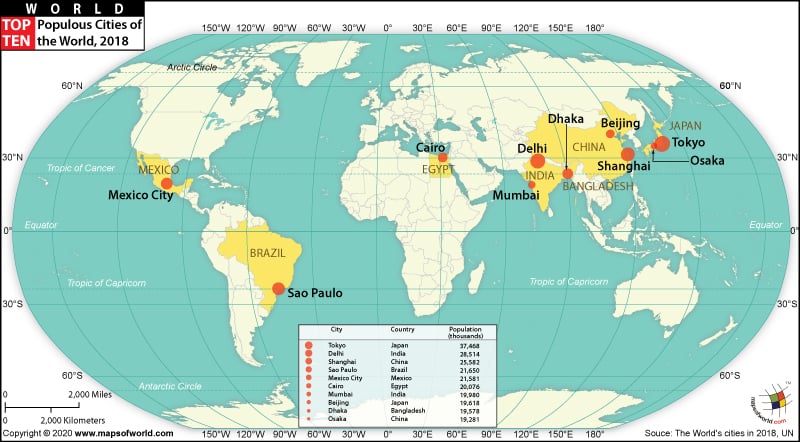5.4K
The world’s largest cities are home to millions of people and serve as centers of culture, commerce, and innovation. From the bustling streets of Tokyo to the chaotic markets of Cairo, these urban hubs offer a glimpse into the diversity and complexity of our world. In this table, we have compiled a list of the top 10 largest cities in the world, based on population estimates as of 2021. Whether you’re a curious traveler or a data enthusiast, this table provides an informative overview of some of the most populous cities on the planet.
10 Largest Cities in the World |
||||
| City | Country | Population (2021) |
Density | Fact |
| Tokyo | Japan | 37,400,068 | 6,158/km² | The most populous city in the world. |
| Delhi | India | 30,290,396 | 11,297/km² | Second most populous city in the world. |
| Shanghai | China | 27,582,087 | 3,864/km² | Largest city in China and the third most populous in the world. |
| São Paulo | Brazil | 21,650,051 | 7,956/km² | Largest city in the Southern Hemisphere. |
| Mumbai | India | 20,667,000 | 21,000/km² | Formerly known as Bombay, India’s financial capital. |
| Beijing | China | 20,384,000 | 1,300/km² | China’s political and cultural capital. |
| Osaka | Japan | 19,281,000 | 4,700/km² | Japan’s second-largest metropolitan area. |
| Cairo | Egypt | 19,237,000 | 48,000/km² | Largest city in Africa and the Arab world. |
| New York City | USA | 18,804,000 | 3,793/km² | Largest city in the United States and home to the UN. |
| Dhaka | Bangladesh | 18,237,000 | 47,000/km² | One of the world’s fastest-growing megacities. |
Related Links
- World Cities Map
- Major Cities in North America
- Major Cities in South America
- Major Cities in Europe
- Major Cities in Africa
- Major Cities in Asia

 Top Ten Sugarcane Producing Countries in the World
Top Ten Sugarcane Producing Countries in the World